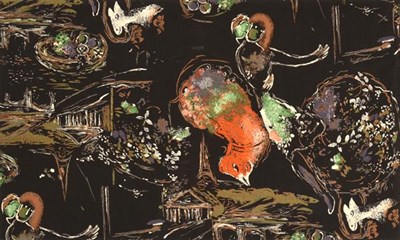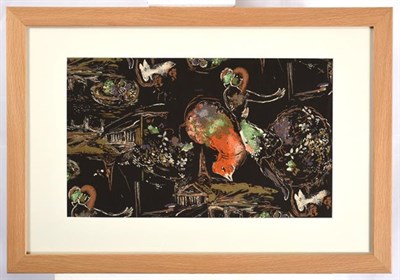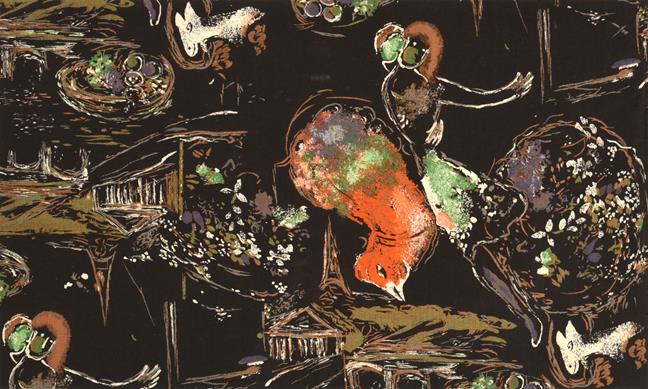19th Jun, 2021 9:30 GMT/BST
Modern & Contemporary Art
2037
Marc Chagall (1887-1995) Russian/French ''Les Amoureaux'' (1955) for Fuller Fabrics Screen...
Marc Chagall (1887-1995) Russian/French ''Les Amoureaux'' (1955) for Fuller Fabrics Screen printed cotton, 27cm by 45cm Artist's Resale Rights/Droit de Suite may apply to this lot, please refer to our Terms of Business See illustration The First half of the 20th century saw an extraordinary collaboration between artists and textile designers. The movement began on the Continent in the 1920s and 1930s, with Raoul Dufy leading the way; his designs for Bianchini-Férier inspired a wave of artists to turn their attention to textiles, and the likes of Edinburgh Weavers to commission designs from influential artists such as Barbara Hepworth and Paul Nash. However, it was in Post-War Britain that the movement really took flight. Whilst preceding decades had seen successful artist/textile collaborations, with the likes of William Morris who brought together fine art and handicrafts in the latter half of the 19th century, the resulting product was sold only to the elite. In a brighter Modern Britain that sought greater equality across the classes, modernised equipment, new printing techniques and socially aware artists combined to make cutting-edge design accessible to all. Artists such as John Piper (see lots 2047-2048), Henry Moore and Kenneth Rowntree (see lot 2044) sought to breakdown status distinctions between fine art and industrially produced objects, just as the Arts and Crafts movement had done a century earlier. Following the years of austerity caused by the Second World War, the British textile industry was much in need of reinvigoration. The large-scale development of new housing created a demand from a cross-section of society for colourful, modern fabrics to personalise their contemporary homes and celebrate an end to the sombre war years. Recruiting artists to create textile designs was an effective way to improve pattern design and raise the profile of the industry. In 1953 the Institute of Contemporary Arts launched the 'Painting into Textiles' exhibition in association with The Ambassador Magazine, a textile trade journal owned by Hans and Elsbeth Juda that promoted British export. The exhibition was instrumental in the development of artist-led textile design. Hans Juda sought to inspire textile manufacturers to forge working collaborations with artists; the manufacturers would translate a freely created work of art into a functioning repeat design. Twenty-five artists were commissioned by Juda to produce artworks for the exhibition, which were purchased by the likes of Arthur Sanderson & Co., Edinburgh Weavers and David Whitehead. The movement flourished throughout the 1950s and 1960s, with many important British and French artists contributing vibrant designs, whose influence we still feel today.
Not SoldAuction: Modern & Contemporary Art, 19th Jun, 2021
Modern & Contemporary Art
Sell one like this
If you've got a similar item to sell, complete the valuation form below and one of our experts will get in touch.


